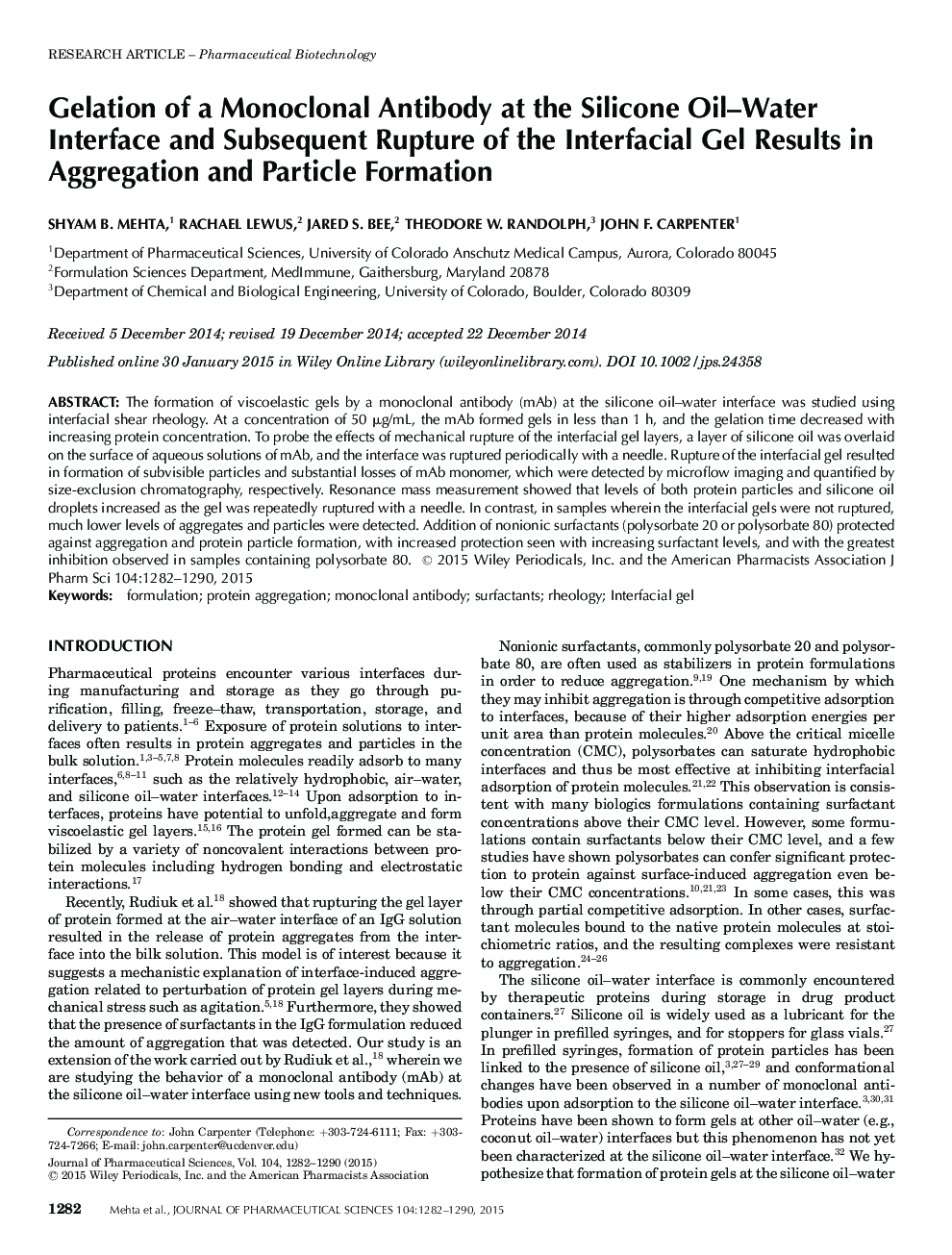| کد مقاله | کد نشریه | سال انتشار | مقاله انگلیسی | نسخه تمام متن |
|---|---|---|---|---|
| 10162120 | 1114317 | 2015 | 9 صفحه PDF | دانلود رایگان |
عنوان انگلیسی مقاله ISI
Gelation of a Monoclonal Antibody at the Silicone Oil-Water Interface and Subsequent Rupture of the Interfacial Gel Results in Aggregation and Particle Formation
ترجمه فارسی عنوان
ژل شدن یک آنتیبادی مونوکلونال در رابطۀ نفت و آب سیلیکون و پارگی بعدی ژل بین فاسیلی در انبساط و تشکیل ذرات
دانلود مقاله + سفارش ترجمه
دانلود مقاله ISI انگلیسی
رایگان برای ایرانیان
کلمات کلیدی
فرمول بندی، تجمع پروتئین، انتی بادی مونوکلونال، سورفکتانت ها، رئوئولوژی، ژل مواجهه
موضوعات مرتبط
علوم پزشکی و سلامت
داروسازی، سم شناسی و علوم دارویی
اکتشاف دارویی
چکیده انگلیسی
The formation of viscoelastic gels by a monoclonal antibody (mAb) at the silicone oil-water interface was studied using interfacial shear rheology. At a concentration of 50 μg/mL, the mAb formed gels in less than 1 h, and the gelation time decreased with increasing protein concentration. To probe the effects of mechanical rupture of the interfacial gel layers, a layer of silicone oil was overlaid on the surface of aqueous solutions of mAb, and the interface was ruptured periodically with a needle. Rupture of the interfacial gel resulted in formation of subvisible particles and substantial losses of mAb monomer, which were detected by microflow imaging and quantified by size-exclusion chromatography, respectively. Resonance mass measurement showed that levels of both protein particles and silicone oil droplets increased as the gel was repeatedly ruptured with a needle. In contrast, in samples wherein the interfacial gels were not ruptured, much lower levels of aggregates and particles were detected. Addition of nonionic surfactants (polysorbate 20 or polysorbate 80) protected against aggregation and protein particle formation, with increased protection seen with increasing surfactant levels, and with the greatest inhibition observed in samples containing polysorbate 80.
ناشر
Database: Elsevier - ScienceDirect (ساینس دایرکت)
Journal: Journal of Pharmaceutical Sciences - Volume 104, Issue 4, April 2015, Pages 1282-1290
Journal: Journal of Pharmaceutical Sciences - Volume 104, Issue 4, April 2015, Pages 1282-1290
نویسندگان
Shyam B. Mehta, Rachael Lewus, Jared S. Bee, Theodore W. Randolph, John F. Carpenter,
